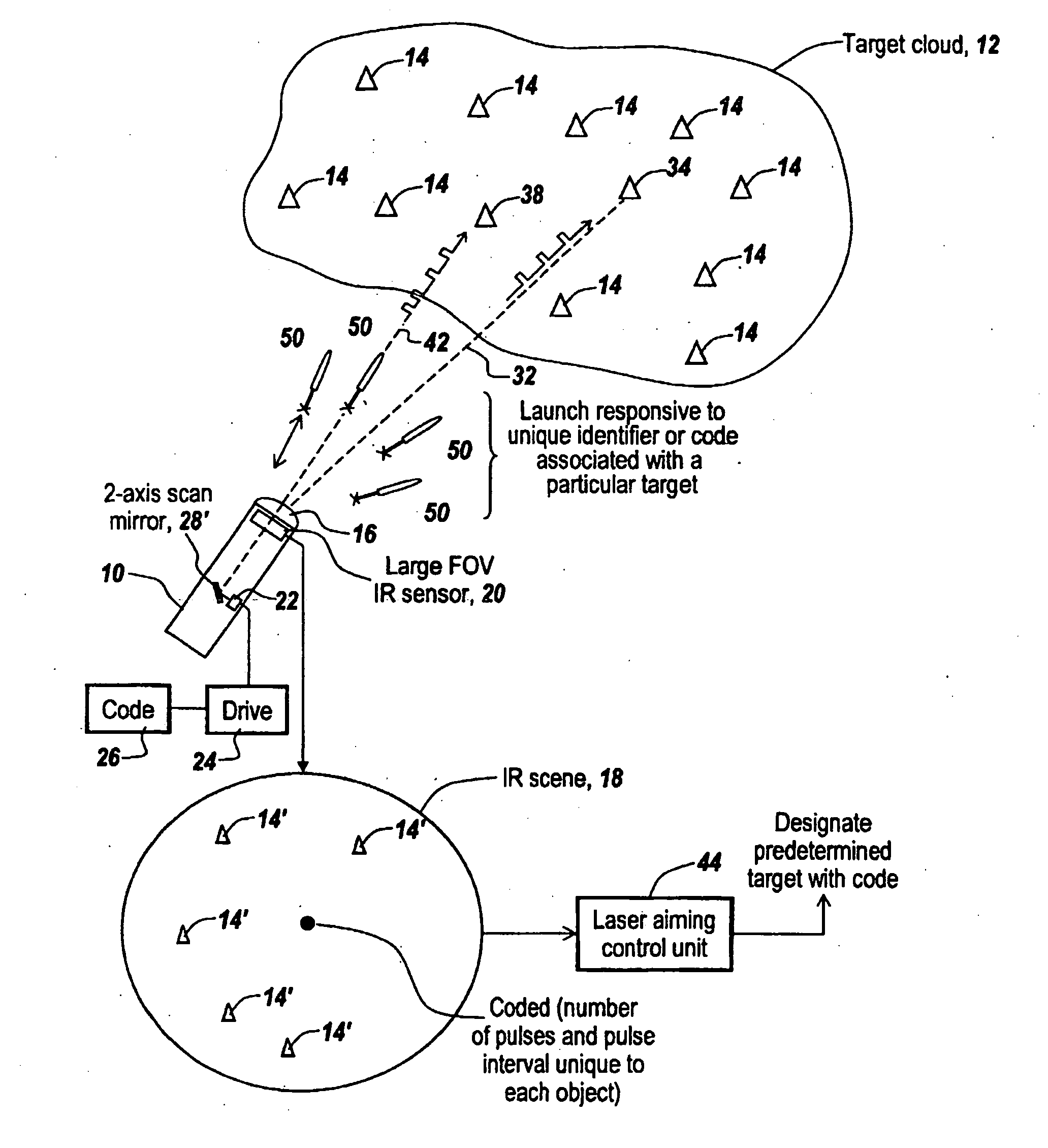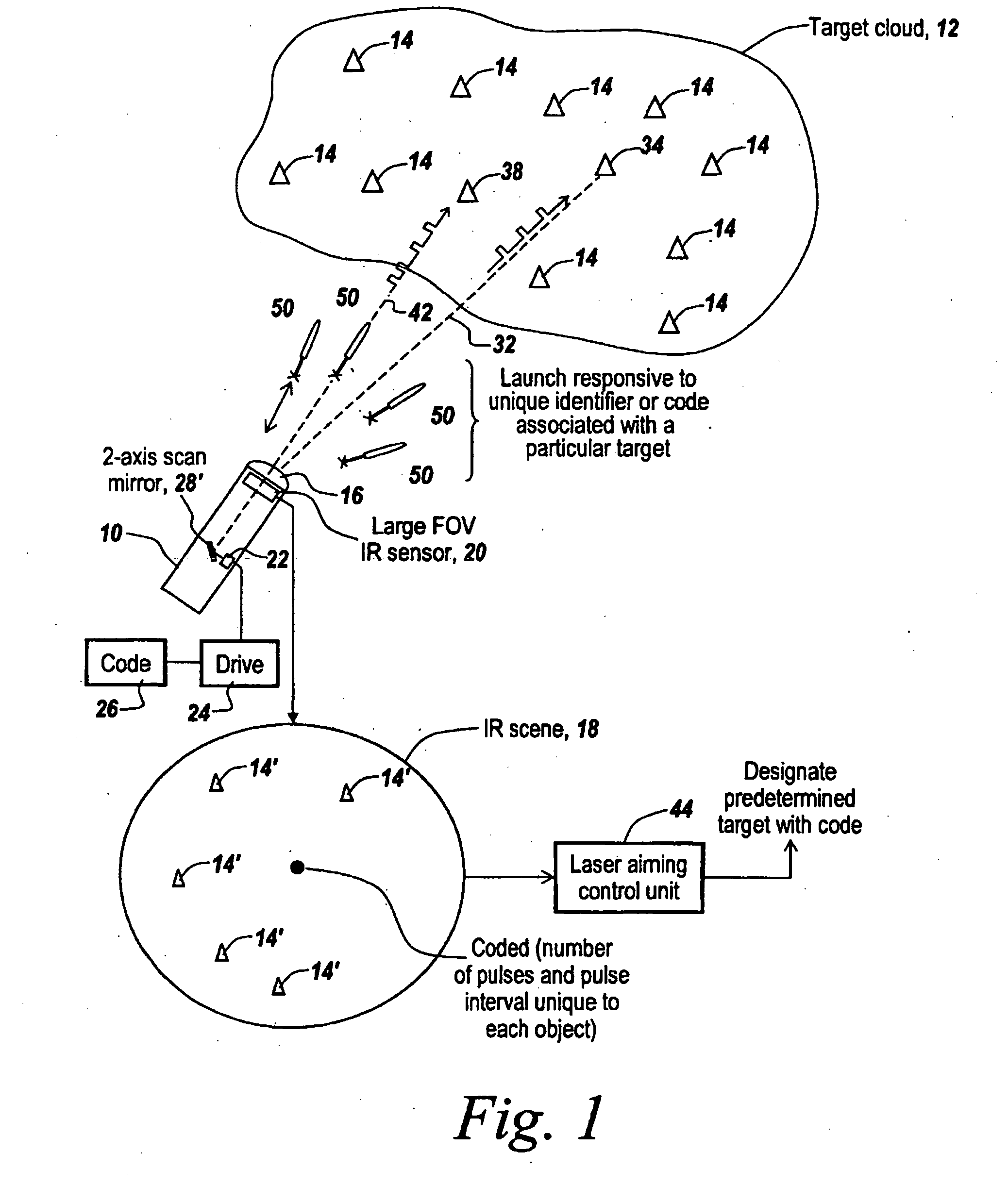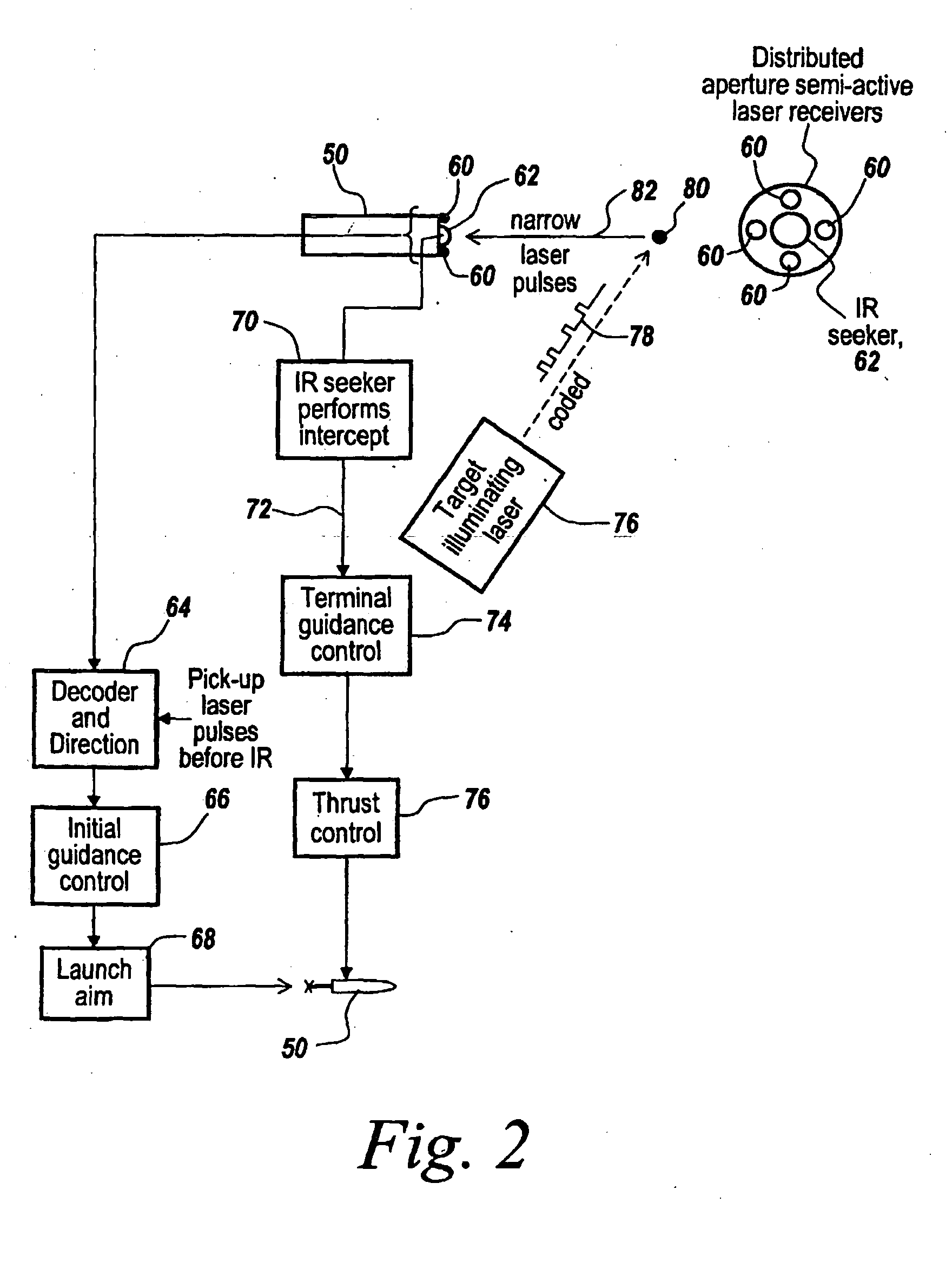Method and Apparatus for Efficiently Targeting Multiple Re-Entry Vehicles with Multiple Kill Vehicles
a technology of multiple kill vehicles and re-entry vehicles, applied in the direction of aiming means, direction controllers, weapons, etc., can solve the problems of ineffective type of icbm countermeasure, insufficient energy available to ensure the destruction of re-entry, and radiation production, so as to increase the effectiveness of destroying selected objects and maximize the effectiveness of all kill vehicles
- Summary
- Abstract
- Description
- Claims
- Application Information
AI Technical Summary
Benefits of technology
Problems solved by technology
Method used
Image
Examples
Embodiment Construction
[0047]Before describing the figures, it will be appreciated that, when faced with as many as 50 objects in a target cloud, there is a question as to how many traditional heat-seeking kill vehicles can reliably kill an armed re-entry vehicle. If the number of objects in a cloud is relatively few, then traditional heat seekers can effectively guide the corresponding kill vehicle to impact the object. However, as the number of objects increases, there is an exponential decay in performance, resulting in a substantial amount of miscuing.
[0048]Note that the penetration aids utilized by intercontinental ballistic missiles are used to purposely confuse the defenses targeting them, which gives rise to the need for multiple interceptors. Current deployments of exo-atmospheric kill systems employ only one interceptor, which gives rise to the necessity of developing a reliable and effective multiple kill vehicle system.
[0049]As will be appreciated, IR heat seekers can start picking up targets,...
PUM
 Login to View More
Login to View More Abstract
Description
Claims
Application Information
 Login to View More
Login to View More - R&D
- Intellectual Property
- Life Sciences
- Materials
- Tech Scout
- Unparalleled Data Quality
- Higher Quality Content
- 60% Fewer Hallucinations
Browse by: Latest US Patents, China's latest patents, Technical Efficacy Thesaurus, Application Domain, Technology Topic, Popular Technical Reports.
© 2025 PatSnap. All rights reserved.Legal|Privacy policy|Modern Slavery Act Transparency Statement|Sitemap|About US| Contact US: help@patsnap.com



